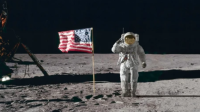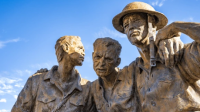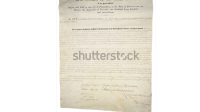Introduction: The Significance of Willem Janszoon’s Arrival
Willem Janszoon Arrival in Queensland – In 1606, Willem Janszoon, a Dutch navigator and explorer, became the first European to make recorded contact with the Australian continent. His arrival on the shores of what is now known as Queensland marks a significant event in the history of Australia, representing the beginning of European exploration and the subsequent encounters between Europeans and Indigenous Australians. Although Janszoon’s voyage did not result in immediate colonization, it set the stage for future expeditions and eventually the widespread European interest in the region.
Willem Janszoon’s journey to Australia was part of a larger Dutch effort to explore and map new territories in the East Indies. His encounter with the Australian continent provides valuable insights into the early interactions between European explorers and the Indigenous peoples of Australia, as well as the challenges faced by these early expeditions. This article will explore the context of Janszoon’s voyage, the details of his journey, and the lasting impact of his arrival in Queensland.
Read Also : The Arrival of the First Indigenous Australians: Tracing 60,000 Years of History
The Context of European Exploration in the Early 17th Century
The early 17th century was a period of intense maritime exploration and expansion for European powers, particularly the Dutch, Spanish, and Portuguese. These nations were driven by the desire to expand their trade networks, discover new resources, and establish colonies in uncharted territories. The Dutch, in particular, were keen to explore the regions of the East Indies, which were rich in spices and other valuable commodities.
Dutch Maritime Exploration: The Dutch East India Company
The Dutch East India Company (VOC), established in 1602, played a central role in the Dutch exploration and expansion efforts. The VOC was granted a monopoly on Dutch trade in the East Indies and was responsible for organizing and funding expeditions to explore new territories, establish trade routes, and secure valuable resources.
The VOC’s interest in the East Indies led to a series of exploratory voyages in the early 1600s. These voyages were aimed at mapping unknown coastlines, establishing contact with local populations, and identifying potential trading opportunities. It was in this context that Willem Janszoon was commissioned by the VOC to explore the waters to the south of New Guinea, leading to his encounter with Australia.
The Dutch East India Company’s focus on exploration and expansion was driven by both economic and strategic considerations. The discovery of new trade routes and resources was essential for maintaining the company’s profitability and securing its position as a dominant force in global trade. The VOC’s support for exploration missions like Janszoon’s was part of a broader strategy to expand Dutch influence and control in the East Indies.
The Quest for New Territories: Motivations Behind Exploration
The motivations behind European exploration during this period were complex and multifaceted. Economic factors, such as the search for new trade routes and resources, were a primary driving force. European powers were eager to find alternative routes to the East Indies to bypass the established trade networks controlled by the Ottoman Empire and other rivals.
In addition to economic motivations, there were also strategic and geopolitical considerations. European nations sought to expand their territorial holdings and establish colonies in newly discovered lands. The competition between European powers for dominance in global trade and territory led to a wave of exploration and expansion, with each nation eager to claim new territories for their own.
Religious and cultural motivations also played a role in European exploration. The spread of Christianity and the desire to convert indigenous populations were often cited as justifications for exploration and colonization. European explorers were also driven by a sense of adventure and curiosity, seeking to discover new lands and expand their understanding of the world.
Navigational Challenges and Technological Advancements
Navigational challenges were a significant factor in the success or failure of early exploration voyages. The vast distances, unpredictable weather, and uncharted waters posed significant risks to explorers like Willem Janszoon. However, technological advancements in navigation and shipbuilding during this period helped to mitigate some of these challenges.
The development of more accurate maps, improved navigational instruments like the astrolabe and quadrant, and advancements in ship design allowed European explorers to venture further into unknown territories. These technological innovations played a crucial role in enabling successful long-distance voyages and contributed to the expansion of European exploration.
The combination of economic, strategic, religious, and technological factors created a powerful impetus for exploration during the early 17th century. Willem Janszoon’s voyage to Queensland was part of this broader wave of exploration, driven by the desire to expand European influence and discover new territories.
Willem Janszoon’s Journey: The Voyage of the Duyfken
Willem Janszoon’s historic voyage to Australia took place aboard the Duyfken, a small Dutch ship that was part of the VOC’s fleet. The Duyfken’s journey was marked by a series of challenges and discoveries, ultimately leading to the first recorded European contact with the Australian continent.
The Duyfken: A Small but Capable Vessel
The Duyfken, meaning “Little Dove” in Dutch, was a relatively small ship by the standards of the time. Measuring just over 20 meters in length, the Duyfken was built for speed and maneuverability rather than cargo capacity. This made it well-suited for exploration and reconnaissance missions in the often treacherous waters of the East Indies.
Despite its small size, the Duyfken was a capable vessel, equipped with the necessary tools and provisions for long-distance voyages. The ship was armed with a small complement of cannons for defense and carried a crew of approximately 20 to 30 men, including sailors, soldiers, and officers.
The Duyfken’s size and design allowed it to navigate the shallow coastal waters and river mouths that larger ships would have struggled to enter. This made it an ideal vessel for exploring the uncharted coastlines of New Guinea and, eventually, Australia.
The Voyage South: Exploring Uncharted Waters
In November 1605, Willem Janszoon set sail from Bantam (modern-day Banten in Indonesia) aboard the Duyfken, heading southward to explore the waters beyond New Guinea. The primary objective of the voyage was to search for new trade routes and territories that could benefit the VOC’s interests in the East Indies.
As the Duyfken sailed southward, the crew encountered a series of challenges, including rough seas, unpredictable weather, and navigational difficulties. The uncharted nature of the waters made the voyage particularly hazardous, with the crew relying on their skills and experience to navigate through unfamiliar territory.
Despite these challenges, the Duyfken continued its journey, eventually reaching the northern coast of Australia in early 1606. This marked the first recorded European contact with the Australian continent, a significant milestone in the history of exploration.
The First European Encounter with Australia
On reaching the shores of Australia, Janszoon and his crew explored the coastline, making observations and mapping the area as they went. The exact location of their landing is believed to be somewhere near the Pennefather River on the western coast of Cape York Peninsula in Queensland.
The crew’s initial impressions of the land were mixed. While they noted the presence of fresh water and vegetation, they also encountered the Indigenous peoples of the region, leading to a series of tense and sometimes violent encounters. The lack of valuable resources, combined with the hostile reception from the local inhabitants, led Janszoon to conclude that the land was of limited interest to the VOC.
The encounter with the Indigenous Australians was brief and marked by mutual misunderstanding and suspicion. The language barrier and cultural differences made communication difficult, and the encounters were characterized by caution and wariness on both sides. The Indigenous Australians, likely surprised and wary of the strange newcomers, reacted defensively, leading to conflicts that further complicated relations.
Mapping the Coastline: The First European Charts of Australia
One of the significant outcomes of Janszoon’s voyage was the creation of the first European charts of the Australian coastline. Although the maps were rudimentary and incomplete, they represented the earliest recorded attempt to document the geography of Australia.
Janszoon’s maps provided valuable information for future explorers, marking the beginning of the European mapping of the Australian continent. These early charts, while limited in scope, laid the foundation for subsequent explorations and the eventual colonization of Australia by European powers.
The significance of these early maps cannot be overstated. They provided the first glimpse of a vast and largely unknown land, sparking curiosity and interest among European powers. While Janszoon’s voyage did not lead to immediate colonization, it set the stage for future expeditions and the eventual European settlement of Australia.
Indigenous Encounters: The First Contact with European Explorers
The arrival of Willem Janszoon and his crew in Queensland marked the beginning of a long and complex history of encounters between Indigenous Australians and European explorers. These early interactions were characterized by misunderstandings, cultural differences, and, at times, conflict.
The Indigenous Peoples of Cape York Peninsula
The Indigenous peoples of Cape York Peninsula, where Janszoon and his crew first landed, had lived in the region for thousands of years. They had developed a deep connection to the land and a rich cultural heritage, including complex social structures, languages, and spiritual beliefs.
The Indigenous Australians of Cape York were skilled hunters and gatherers, with a deep understanding of the local environment. Their way of life was closely tied to the land, with seasonal movements and practices that ensured the sustainable use of resources.
The arrival of European explorers like Janszoon represented a significant disruption to the lives of the Indigenous Australians. The sudden appearance of strange, foreign vessels and people was likely a source of confusion and concern for the local inhabitants.
First Impressions: A Meeting of Two Worlds
The first encounters between Janszoon’s crew and the Indigenous Australians were marked by mutual curiosity and caution. The crew, unfamiliar with the local customs and environment, approached the Indigenous people with a mix of curiosity and wariness. Similarly, the Indigenous Australians, likely surprised by the arrival of these strange newcomers, reacted with caution.
The lack of a common language made communication difficult, and both sides struggled to understand each other’s intentions. The cultural differences between the two groups further complicated these early interactions, leading to misunderstandings and, in some cases, conflict.
Despite the challenges, these early encounters provided the first opportunity for the Indigenous Australians and Europeans to learn about each other’s cultures and ways of life. While the interactions were brief and often tense, they marked the beginning of a complex and ongoing relationship between Indigenous Australians and European settlers.
Conflict and Misunderstanding
Unfortunately, the early encounters between Janszoon’s crew and the Indigenous Australians were not always peaceful. The lack of understanding and the tensions that arose from the cultural differences led to conflicts. The Europeans, armed with firearms and unfamiliar with the local customs, often reacted defensively when they felt threatened. This, in turn, led to violent clashes with the Indigenous Australians, who were defending their land and way of life.
The conflicts that occurred during these early encounters set the tone for future interactions between Indigenous Australians and European explorers. The misunderstandings and mistrust that characterized these early meetings would continue to shape the relationships between the two groups for centuries to come.
The Legacy of First Contact
The legacy of Janszoon’s first contact with the Indigenous Australians is a complex and multifaceted one. While the initial encounters were marked by conflict and misunderstanding, they also represent the beginning of a long and often difficult relationship between Indigenous Australians and European settlers.
The arrival of European explorers like Janszoon had a profound impact on the Indigenous peoples of Australia. The subsequent waves of exploration, colonization, and settlement would bring significant changes to their way of life, leading to the displacement of communities, the loss of land, and the disruption of cultural practices.
However, the legacy of these early encounters also includes the resilience and adaptability of Indigenous Australians. Despite the challenges they faced, Indigenous communities have maintained their cultural identity and continue to play a vital role in the social and cultural fabric of Australia today.
The Impact of Willem Janszoon’s Voyage: Short-Term and Long-Term Consequences
Willem Janszoon’s voyage to Queensland had significant short-term and long-term consequences, both for the Dutch and for the future of European exploration in Australia.
Immediate Reactions and Aftermath
In the immediate aftermath of Janszoon’s voyage, the Dutch East India Company (VOC) assessed the value of the newly discovered land. Janszoon’s reports, which highlighted the lack of valuable resources and the hostile reception from the Indigenous Australians, led the VOC to conclude that the region was of limited interest.
As a result, the Dutch did not pursue further exploration or settlement in Australia for several decades. Janszoon’s voyage, while historically significant, did not lead to immediate colonization or exploitation of the Australian continent by the Dutch.
Despite the VOC’s lack of interest, Janszoon’s voyage was an important milestone in the history of exploration. It marked the first recorded European contact with Australia and provided valuable information for future explorers. The maps and charts created during the voyage laid the groundwork for subsequent explorations of the region.
Influence on Future Exploration
While Janszoon’s voyage did not lead to immediate Dutch colonization, it did spark interest in the region among other European powers. The knowledge that there was a vast, uncharted land to the south of the East Indies intrigued explorers and cartographers alike.
In the decades following Janszoon’s voyage, other European nations, including the English and the French, launched their own expeditions to explore the southern continent. These voyages built upon the information gathered by Janszoon and other early explorers, gradually revealing more of Australia’s coastline and interior.
The long-term influence of Janszoon’s voyage is evident in the growing European interest in Australia during the 17th and 18th centuries. While the Dutch did not establish a permanent presence in Australia, Janszoon’s exploration laid the foundation for future European exploration and eventual colonization.
The Dutch Legacy in Australian History
Willem Janszoon’s voyage is a key chapter in the Dutch legacy in Australian history. Although the Dutch did not colonize Australia, their early explorations left a lasting impact on the continent’s history. Dutch explorers like Janszoon, Dirk Hartog, and Abel Tasman were among the first Europeans to chart Australia’s coastline, and their voyages contributed to the growing European knowledge of the region.
The Dutch influence is still evident in the names of various geographic features in Australia, including Cape York, Arnhem Land, and the Tasman Sea. These names reflect the legacy of the early Dutch explorers who first mapped these regions.
Janszoon’s voyage also serves as a reminder of the complexities and challenges of early European exploration. His journey to Queensland highlights the difficulties faced by explorers as they ventured into unknown territories, and the often fraught interactions between European explorers and Indigenous populations.
Conclusion: Reflecting on Willem Janszoon’s Arrival in Queensland
Willem Janszoon’s arrival in Queensland in 1606 marks a significant moment in the history of Australia. As the first recorded European to make contact with the Australian continent, Janszoon’s voyage represents the beginning of a long and complex history of exploration, encounter, and exchange between Europeans and Indigenous Australians.
While Janszoon’s voyage did not lead to immediate colonization, it set the stage for future European exploration and the eventual settlement of Australia. The maps and knowledge gained during his journey provided valuable information for subsequent explorers and contributed to the growing European interest in the southern continent.
The legacy of Willem Janszoon’s arrival is a multifaceted one, encompassing both the achievements of early European exploration and the challenges and disruptions faced by Indigenous Australians. Reflecting on this history provides valuable insights into the complexities of exploration and the long-term impacts of these early encounters on the people and land of Australia.
FAQ About Willem Janszoon’s Arrival in Queensland
Who was Willem Janszoon?
Willem Janszoon was a Dutch navigator and explorer who, in 1606, became the first recorded European to make contact with the Australian continent. He was an officer of the Dutch East India Company and commanded the ship Duyfken during his historic voyage.
What was the significance of Janszoon’s voyage?
Janszoon’s voyage was significant because it marked the first recorded European contact with Australia. His arrival in Queensland in 1606 set the stage for future European exploration and provided valuable information about the region’s geography.
How did the Indigenous Australians react to Janszoon’s arrival?
The reaction of the Indigenous Australians to Janszoon’s arrival was one of caution and defense. The lack of a common language and cultural differences led to misunderstandings and conflicts during the brief encounters between Janszoon’s crew and the local inhabitants.
Why did the Dutch East India Company not pursue further exploration in Australia?
The Dutch East India Company assessed Janszoon’s reports and concluded that the region was of limited interest due to the lack of valuable resources and the hostile reception from the Indigenous Australians. As a result, they did not pursue further exploration or colonization in Australia at that time.
What is the legacy of Willem Janszoon’s arrival in Queensland?
The legacy of Janszoon’s arrival includes the early mapping of Australia’s coastline, the beginning of European exploration in the region, and the complex interactions between Europeans and Indigenous Australians. His voyage is a key chapter in the history of exploration and the Dutch legacy in Australia.







Hi
I wanted to reach out and let you know about our new dog harness. It’s really easy to put on and take off – in just 2 seconds – and it’s personalized for each dog.
Plus, we offer a lifetime warranty so you can be sure your pet is always safe and stylish.
We’ve had a lot of success with it so far and I think your dog would love it.
Get yours today with 50% OFF: https://caredogbest.com
FREE Shipping – TODAY ONLY!
To your success,
Fredericka
Hey there
Looking to improve your posture and live a healthier life? Our Medico Postura™ Body Posture Corrector is here to help!
Experience instant posture improvement with Medico Postura™. This easy-to-use device can be worn anywhere, anytime – at home, work, or even while you sleep.
Made from lightweight, breathable fabric, it ensures comfort all day long.
Grab it today at a fantastic 60% OFF: https://medicopostura.com
Plus, enjoy FREE shipping for today only!
Don’t miss out on this amazing deal. Get yours now and start transforming your posture!
Have a great time,
Candra
Looking for quick working capital? Get approved instantly—no credit checks, no
paperwork, just a smooth, easy process.
See what you qualify for today: reachoutcapital.com/approval
Need working capital? Check what you qualify for instantly—no credit check,
no documents, no sales calls. It’s free and fully automated.
Try now: reachoutcapital.com/approval
Tired of dealing with slow, outdated loan approvals? Experience the future of
working capital—instant, hassle-free, and completely automated.
See what you qualify: reachoutcapital.com/approval
Morning,
I hope this email finds you well. I wanted to let you know about our new BANGE backpacks and sling bags that just released.
The bags are waterproof and anti-theft, and have a built-in USB cable that can recharge your phone while you’re on the go.
Both bags are made of durable and high-quality materials, and are perfect for everyday use or travel.
Order yours now at 50% OFF with FREE Shipping: http://bangeshop.com
Many Thanks,
Jovita
Looking for working capital? See what you qualify for instantly—no credit check, no paperwork, no sales calls. It’s fast, free, and fully automated.
Get started now: reachoutcapital.com/approval
Disclosure: This is a paid advertisement from Reachout Capital. You are receiving this message because you have either inquired about our services or opted to receive marketing communications.
If you no longer wish to receive marketing messages from us, you can unsubscribe by clicking reachoutcapital.com/unsubscribe or send a written request to:
Reachout Capital
Atlanta Financial Center
3343 Peachtree Rd NE, Suite 145-410
Atlanta, GA 30326
We honor all opt-out requests within 10 business days.
Frustrated with slow and outdated loan approvals?
Step into the future of working capital—fast, easy, and fully automated.
Find out what you qualify for in less than 30 seconds at: reachoutcapital.com/approval
Disclosure: This is a paid advertisement from Reachout Capital. You are receiving this message because you have either inquired about our services or opted to receive marketing communications.
If you no longer wish to receive marketing messages from us, you can unsubscribe by clicking reachoutcapital.com/unsubscribe or send a written request to:
Reachout Capital
Atlanta Financial Center
3343 Peachtree Rd NE, Suite 145-410
Atlanta, GA 30326
We honor all opt-out requests within 10 business days.
In need of fast working capital?
Get approved in seconds—no credit checks, no paperwork,
just a hassle-free experience.
Find out what you qualify for today: reachoutcapital.com/approval
Disclosure: This is a paid advertisement from Reachout Capital. You are receiving this message because you have either inquired about our services or opted to receive marketing communications.
If you no longer wish to receive marketing messages from us, you can unsubscribe by clicking reachoutcapital.com/unsubscribe or send a written request to:
Reachout Capital
Atlanta Financial Center
3343 Peachtree Rd NE, Suite 145-410
Atlanta, GA 30326
We honor all opt-out requests within 10 business days.
Looking for working capital? See what you qualify for in 30 seconds—no credit check, no paperwork, no sales calls.
Instant approvals, next-day funding. It’s fast, free, and fully automated.
Get started now: http://www.nextdayworkingcapital.com/approval
Trusted by thousands of small business owners. Over 600 million funded to businesses like yours!
If you no longer wish to receive marketing messages from us, you can unsubscribe at https://nextdayworkingcapital.com/unsubscribe
Hey there
Looking to improve your posture and live a healthier life? Our Medico Postura™ Body Posture Corrector is here to help!
Experience instant posture improvement with Medico Postura™. This easy-to-use device can be worn anywhere, anytime – at home, work, or even while you sleep.
Made from lightweight, breathable fabric, it ensures comfort all day long.
Grab it today at a fantastic 60% OFF: https://medicopostura.com
Plus, enjoy FREE shipping for today only!
Don’t miss out on this amazing deal. Get yours now and start transforming your posture!
Best,
Leslee
Business Funding on Your Terms—No Credit Check, No Hassle.
Get fast, flexible working capital without the usual roadblocks.
Instant approvals, next-day funding, and no paperwork required.
Check your eligibility in 30 seconds—100% free!
See what you qualify for: http://www.nextdayworkingcapital.com/approval
Trusted by thousands of small business owners. Over 600 million funded to businesses like yours!
If you no longer wish to receive marketing messages from us, you can unsubscribe at nextdayworkingcapital.com/unsubscribe
Hello,
Rare Discounts on Top Brands
Louis Vuitton, Gucci, Coach, Nike, and Armani at over 90% off. Visit https://luxesource.shop now.
Take care,
What if you could get business funding—without the hassle?
No credit checks, no paperwork, no sales calls. Just instant approvals and next-day funding.
See what you qualify for in 30 seconds—it’s fast, easy, and risk-free!
Don’t wait-Apply Now: http://www.nextdayworkingcapital.com/approval
Trusted by thousands of small business owners. Over 600 million funded to businesses like yours!
If you no longer wish to receive marketing messages from us, you can unsubscribe at nextdayworkingcapital.com/unsubscribe
Good day
I wanted to reach out and let you know about our new dog harness. It’s really easy to put on and take off – in just 2 seconds – and it’s personalized for each dog.
Plus, we offer a lifetime warranty so you can be sure your pet is always safe and stylish.
We’ve had a lot of success with it so far and I think your dog would love it.
Get yours today with 50% OFF: https://caredogbest.com
FREE Shipping – TODAY ONLY!
Best Wishes,
Danelle
Hello
Say goodbye to muscle and joint pain with the FitRx Wireless Massager.
This compact, rechargeable TENS device offers 8 massage modes, 9 intensity levels, and can be controlled by app or manually. It’s perfect for pain relief, recovery, and relaxation — anytime, anywhere. Try it now and feel the difference.
Grab it today at a fantastic 50% OFF: https://easerelief.net
Plus, enjoy FREE Priority shipping for today only!
To your success,
Gerald
Want to get your message in front of millions of potential customers? Our service can help. By sending your ad text to website contact forms, your message will be read just like you’re reading this one. And with one flat rate, you can reach a massive audience without any per click costs. Start growing your business today.
Feel free to contact me using the details below if you want to learn more about my approach.
Regards,
Dianna Roberge
Email: Dianna.Roberge@getmoreleads.top
Website: https://ads-with-no-boundaries.my